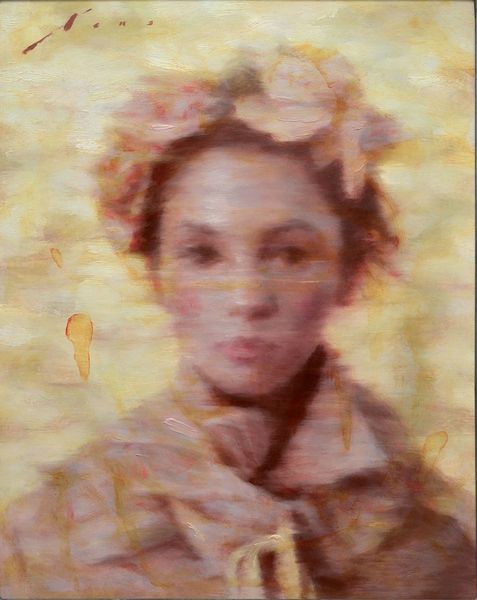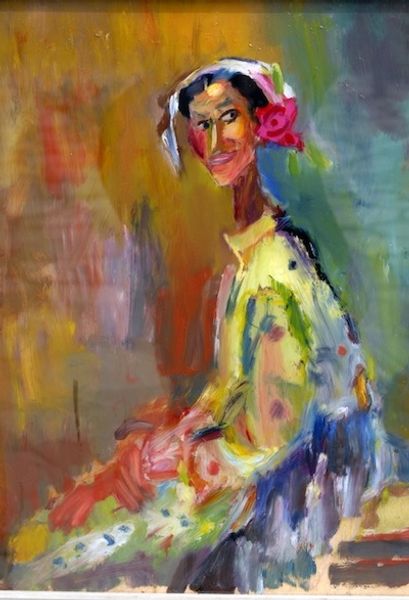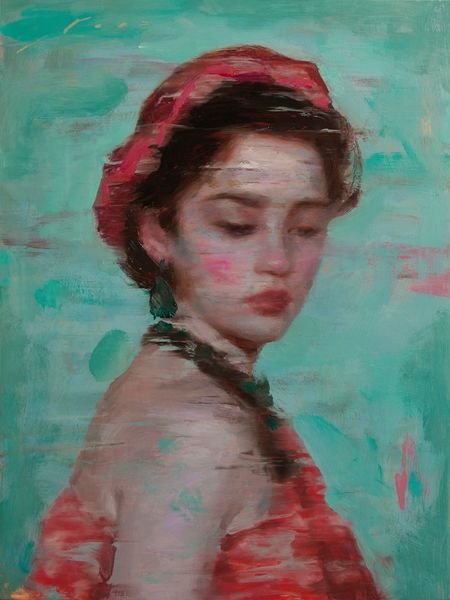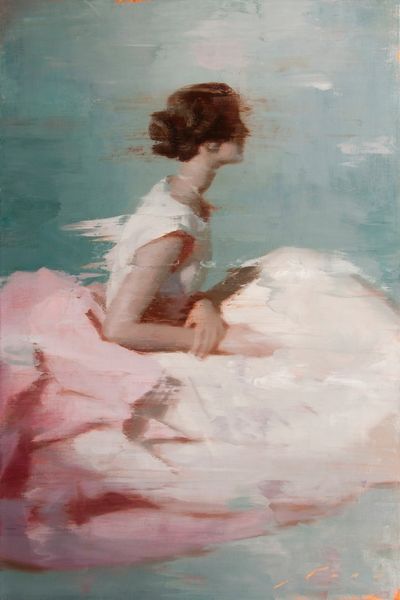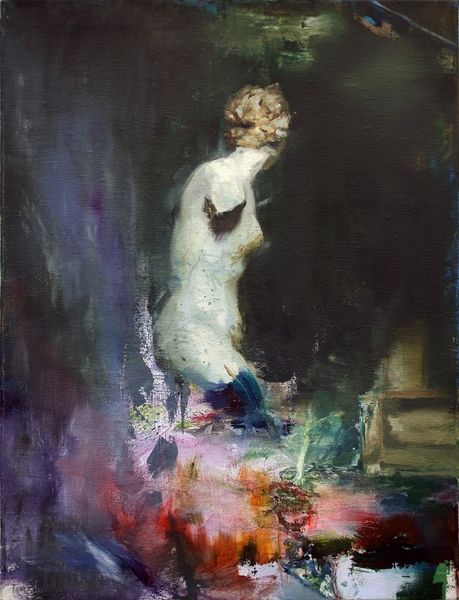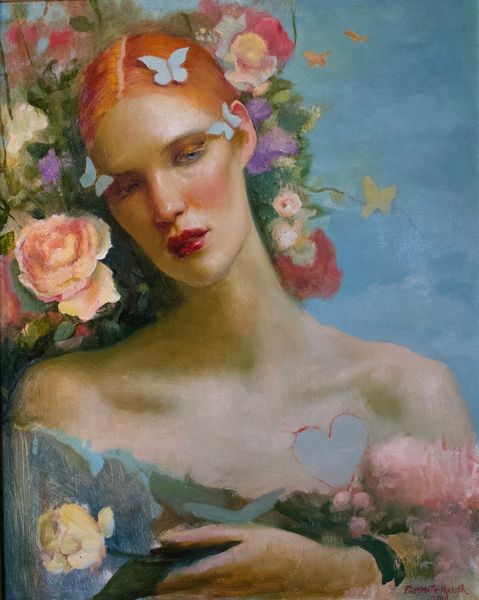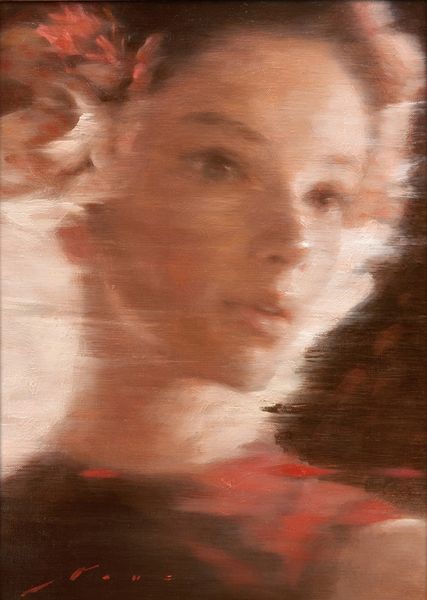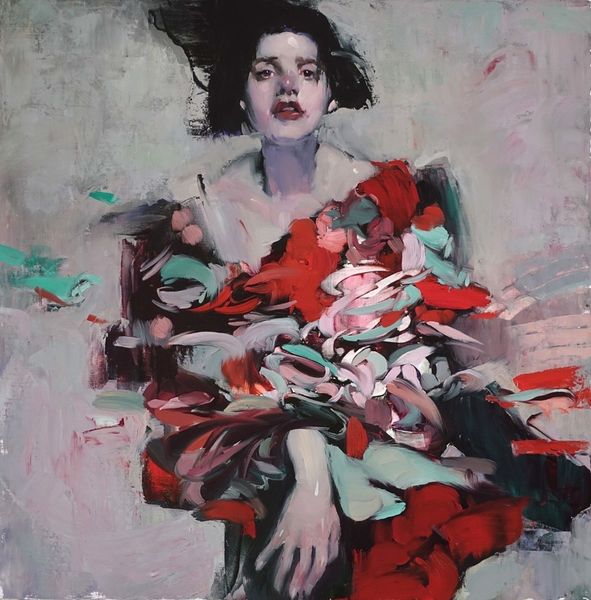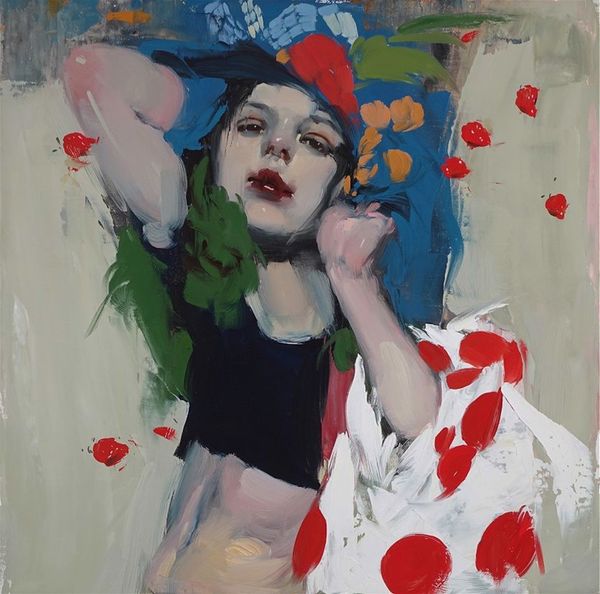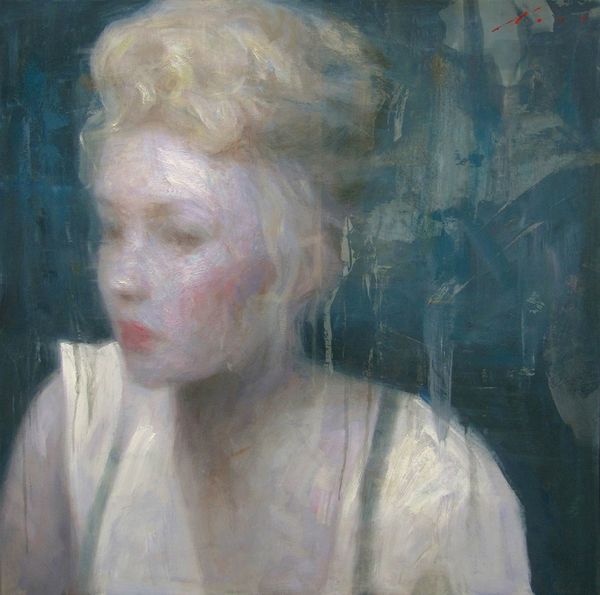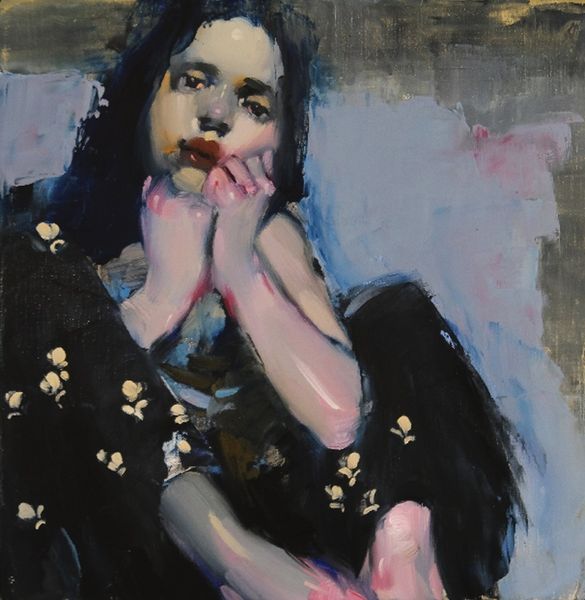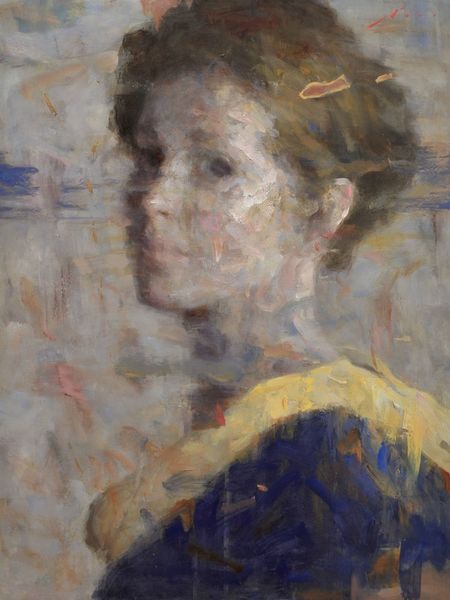
painting, oil-paint, impasto
#
portrait
#
figurative
#
painting
#
oil-paint
#
figuration
#
oil painting
#
impasto
#
expressionism
#
expressionist
Copyright: Modern Artists: Artvee
Editor: So, this is Vincent Xeus’s "1985", an oil painting that’s listed without a specific creation date. The heavy impasto gives it a tangible quality. I am really struck by how blurred the face is; what does that indistinctness signify, do you think? Curator: That's a very insightful observation. For me, that blurring is key. Think about it – the painting is called "1985", right? Yet, the subject, particularly the face, isn't sharply defined. What emotional residue does 1985 hold in cultural memory, or perhaps personal memory? Is it a clear picture, or something more…dreamlike? Editor: That's fascinating. The flowers surrounding the figure...they’re painted in a similar style, almost merging with her. Does that mean something specific? Curator: Consider the traditional symbolism of flowers: often associated with beauty, fragility, and the fleeting nature of time. In this context, and specifically here where the artist has intertwined figure with surrounding medium, do they enhance or contrast the figure’s implied emotional state? The year itself—1985—holds certain socio-political and technological resonances too. Might those inform the image? Editor: I hadn’t considered that. So, the lack of clear features invites us to project our own memories and understanding of that time onto the image. Curator: Precisely. It's as if the artist is tapping into a collective unconscious surrounding "1985," using symbols—the flowers, the indistinct face—to evoke feelings and associations rather than specific details. Do you think this makes it more or less powerful as a statement? Editor: More, I think. The vagueness allows it to resonate more broadly, almost like a dream anyone could have. It is so suggestive in a general manner. Curator: I concur. By moving away from photorealistic clarity, Xeus prompts us to engage with the emotional and psychological weight of history, prompting a more introspective interaction. Editor: It’s made me rethink how artists can use ambiguity to create stronger connections with the viewer's own lived experiences and collective memories. Curator: Indeed, and how a seemingly simple title can unlock layers of cultural meaning.
Comments
No comments
Be the first to comment and join the conversation on the ultimate creative platform.
